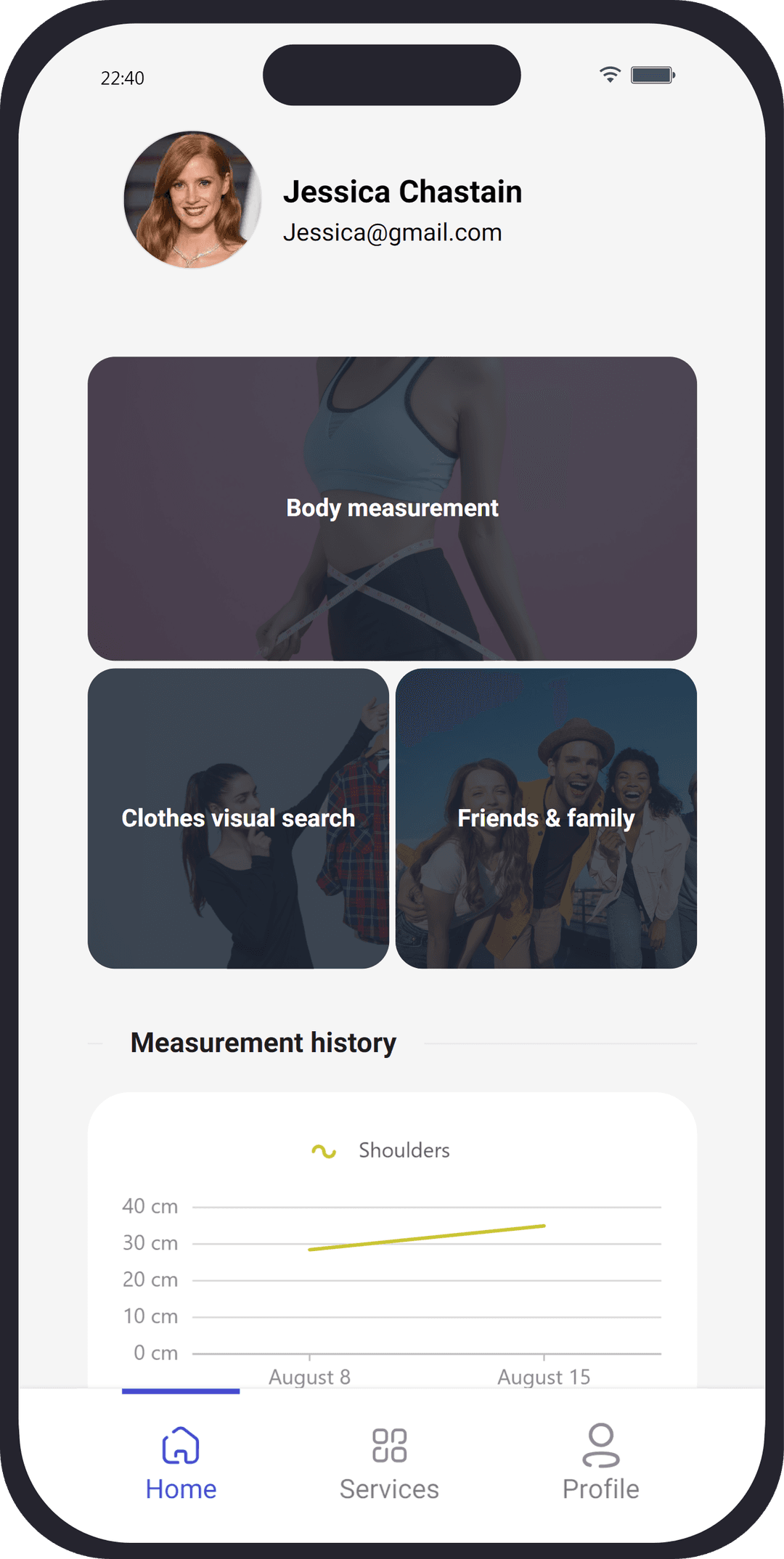
The Challenge of High Return Rates in the Fashion Industry
In today's retail landscape, effective returns management is pivotal for long-term sustainability and triumph. Recent data reveals that clothing and footwear are the top choices of online shoppers, with clothing taking the lead in returns, accounting for 26%-30% of all returns in the United States. It's not just about the numbers; the specific types of clothing with the highest return rates are equally significant. Understanding the reasons behind these returns, whether related to fit, quality, or shifting preferences, is crucial for both e-commerce and brick-and-mortar stores. High return rates not only incur operational costs but also impact the environment. This insight into return habits is a key to understanding consumer behavior and shaping effective product development and marketing strategies. Discover who returns items most frequently and why, as we explore how fashion retailers can enhance customer satisfaction and operational efficiency.
Returns in the fashion industry represent a significant and complex challenge. According to statistics, footwear and clothing stand out as the most popular items for online shoppers. Notably, clothing takes the lead when it comes to items that people often return when purchased online. Recent research indicates that a significant 26%-30% of consumers in the United States have returned clothing products they bought online in the past year.
It's worth noting that the specific types of clothing that experience the highest return rates are also crucial.
As consumers increasingly turn to online shopping, the rate of fashion item returns has risen. This trend affects both e-commerce platforms and traditional retail stores. Returns in the fashion sector can be due to various factors, including issues with fit, dissatisfaction with product quality, or simply changing one's mind. In the fashion industry, managing and reducing return rates is critical for profitability and sustainability, as high return rates can lead to increased operational costs, wasted resources, and potential negative environmental impacts. Furthermore, studying return habits helps the industry better understand consumer behavior and preferences, ultimately influencing product development and marketing strategies. Understanding who returns items most frequently and the reasons behind these returns is essential for fashion retailers looking to improve customer satisfaction and operational efficiency.
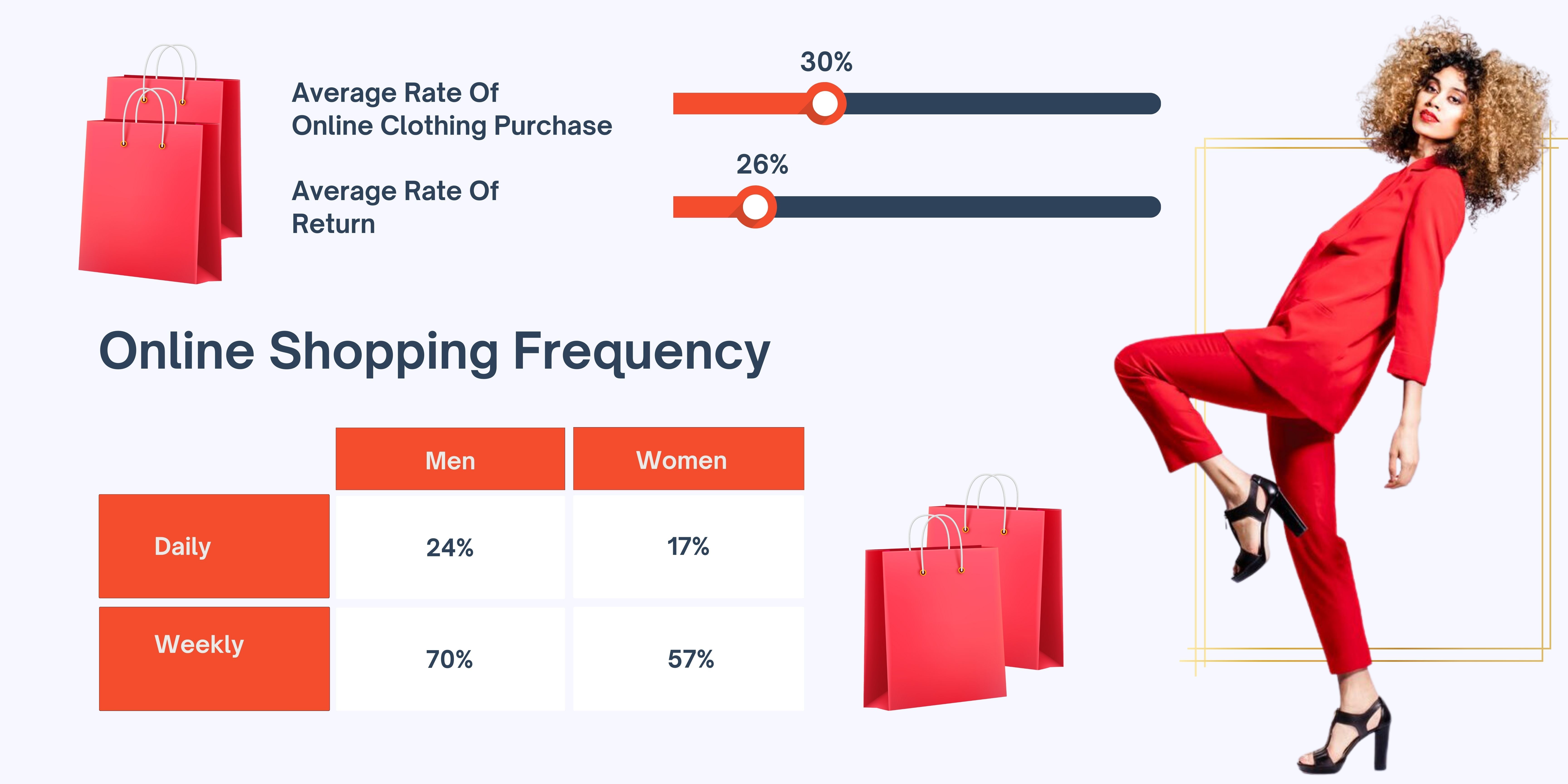 Why Understanding Return Rate In the Fashion Industry Is So Important
Why Understanding Return Rate In the Fashion Industry Is So Important
Understanding return rates in the fashion industry is crucial for several reasons. Firstly, it impacts the bottom line of retailers, as excessive returns can result in increased operational costs, restocking expenses, and potentially reduced profitability. High return rates also contribute to waste, which is a growing concern in terms of environmental sustainability. By understanding return rates, fashion companies can identify trends in consumer behavior, enabling them to develop more accurate inventory management, improve product quality, and tailor marketing strategies to reduce returns and improve customer satisfaction.
Losing nearly one in every ten purchases is a disconcerting statistic. However, the actual scale of this problem is even more substantial than it first appears. According to Forrester, in 2021, the average return rate for clothing purchased online surged to a staggering 30%. This alarming figure means that nearly one-third of all clothing items sold online were ultimately returned, posing a significant challenge to the profitability of e-commerce fashion businesses.
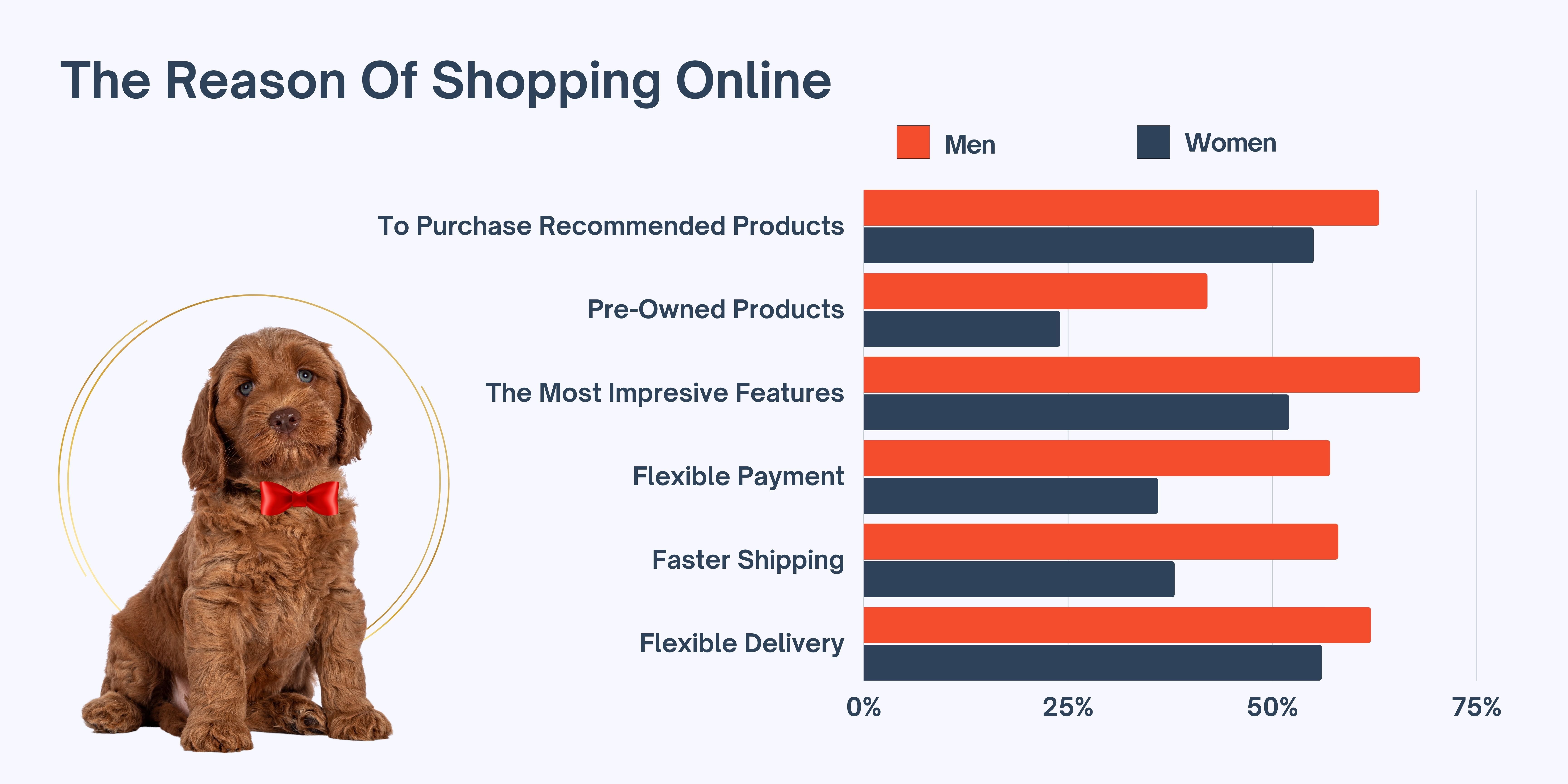
E-commerce and retail data can also be analyzed to identify any gender-specific trends in return habits. For instance, are men more likely to return clothing due to sizing issues compared to women? This kind of information can provide businesses with insights into tailoring their products and services to meet the specific needs of different customer segments. E-commerce platforms and retailers hold a wealth of information that can illuminate return habits in the fashion industry. By examining return rates, understanding common reasons for returns, and identifying any gender-specific trends, we can gain a comprehensive understanding of this critical aspect of the fashion business. This information serves as a valuable tool for improving the industry's practices, reducing return rates, and enhancing the overall shopping experience for consumers.
So to comprehensively analyze the return rates in the fashion industry, as you saw previously, it is imperative to consider various factors. This includes an examination of which gender exhibits a higher propensity for online shopping and subsequent returns, as well as an exploration of the underlying causes for these returns. The data gathered through such an investigation can serve as a foundation for configuring and implementing effective solutions. Notably, in the realm of clothing, issues related to fitting often emerge as a predominant reason for returns. Fortunately, contemporary advancements in AI measurements and virtual try-on technologies offer promising solutions to mitigate these challenges. In the following sections, we will delve further into a detailed examination of return rates and the associated underlying factors and challenges.
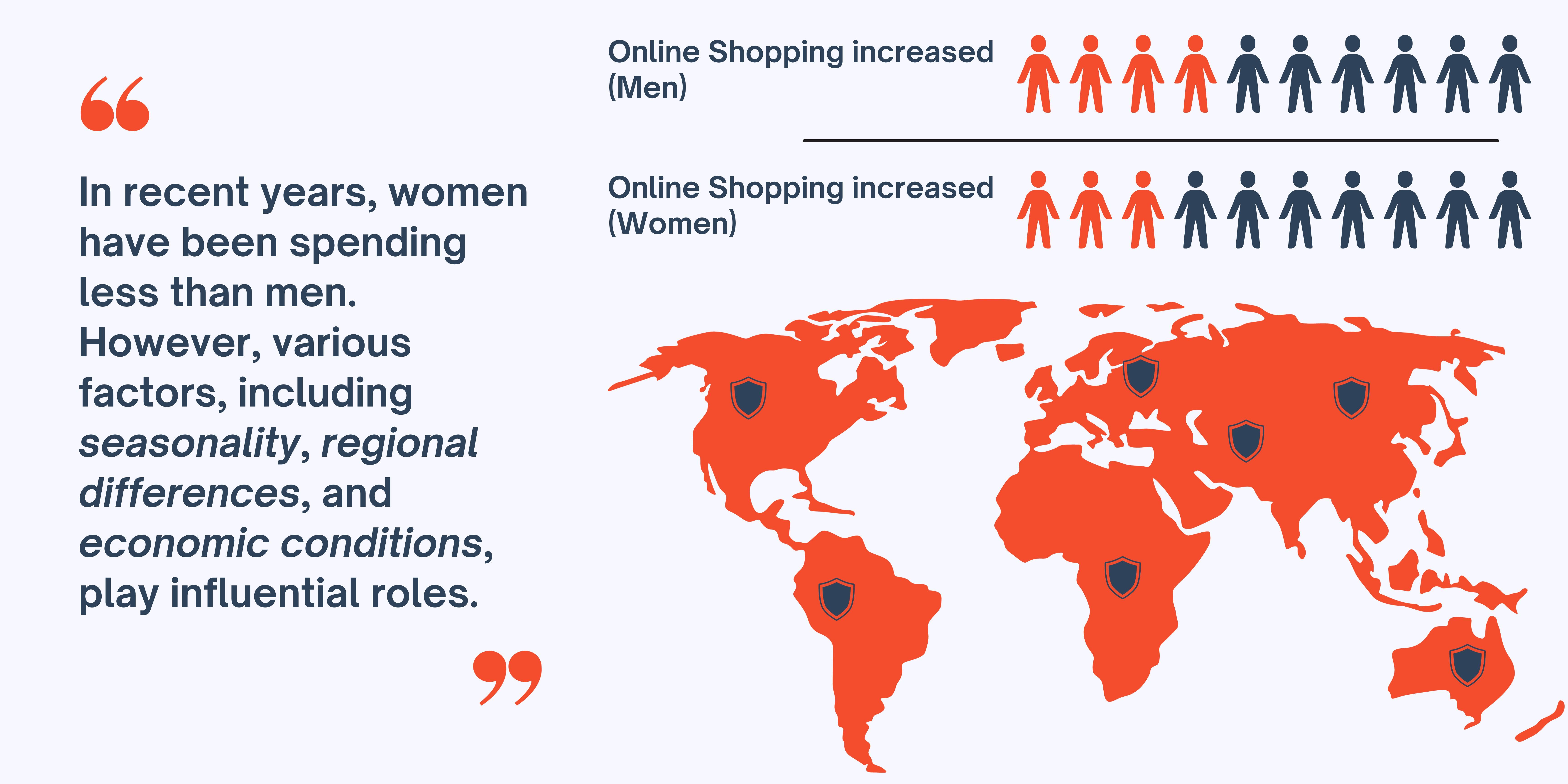 Differences In Shopping Behaviors Between Men And Women
Differences In Shopping Behaviors Between Men And Women
To understand the origin of this issue, we have to take the specific shopping behavioral differences between men and women into consideration. Surprisingly, recent trends suggest that men and women are more alike than traditionally believed. Both genders share preferences for particular retailers, a desire for swift online order delivery, and a strong inclination to purchase products backed by favorable reviews. However, when delving into the nuances of these behaviors, 2021 brought to light some interesting distinctions. Men, in particular, demonstrated a heightened sense of discernment. They showed a keener interest in product features, a greater propensity to employ money-saving digital tools, and a notable preference for flexible payment options, reflecting a proactive approach to their shopping.
An intriguing revelation from the data is that men exhibited a slightly greater willingness to open their wallets compared to women in 2021. This bucks the trend of financial conservatism that gripped many amid the uncertainties and job losses of the past year. Notably, both men and women turned to tech-savvy saving methods, such as browser extensions that hunt for deals and flexible payment choices. Surprisingly, two-thirds of both groups expressed their focus on seeking the lowest prices when shopping online. Yet, within this landscape of fiscal prudence, it's the male demographic that emerges as the one more willing to spend, even in the wake of economic turbulence.
Despite these variances, a broader look at consumer behavior during 2021 paints a picture of cautious spending. The majority of consumers, irrespective of gender, reported maintaining or reducing their overall expenditures since 2020. This shared thriftiness transcends gender boundaries, with both men and women actively seeking ways to make their money go further. However, it's the male consumers who appear to be the exception to the rule, as they are more inclined to loosen their purse strings in the same timeframe. In essence, while the consensus indicates a reduction in spending, men exhibit a distinct inclination to spend more compared to women. These insights offer valuable perspectives on the evolving landscape of consumer behavior in the modern shopping ecosystem.
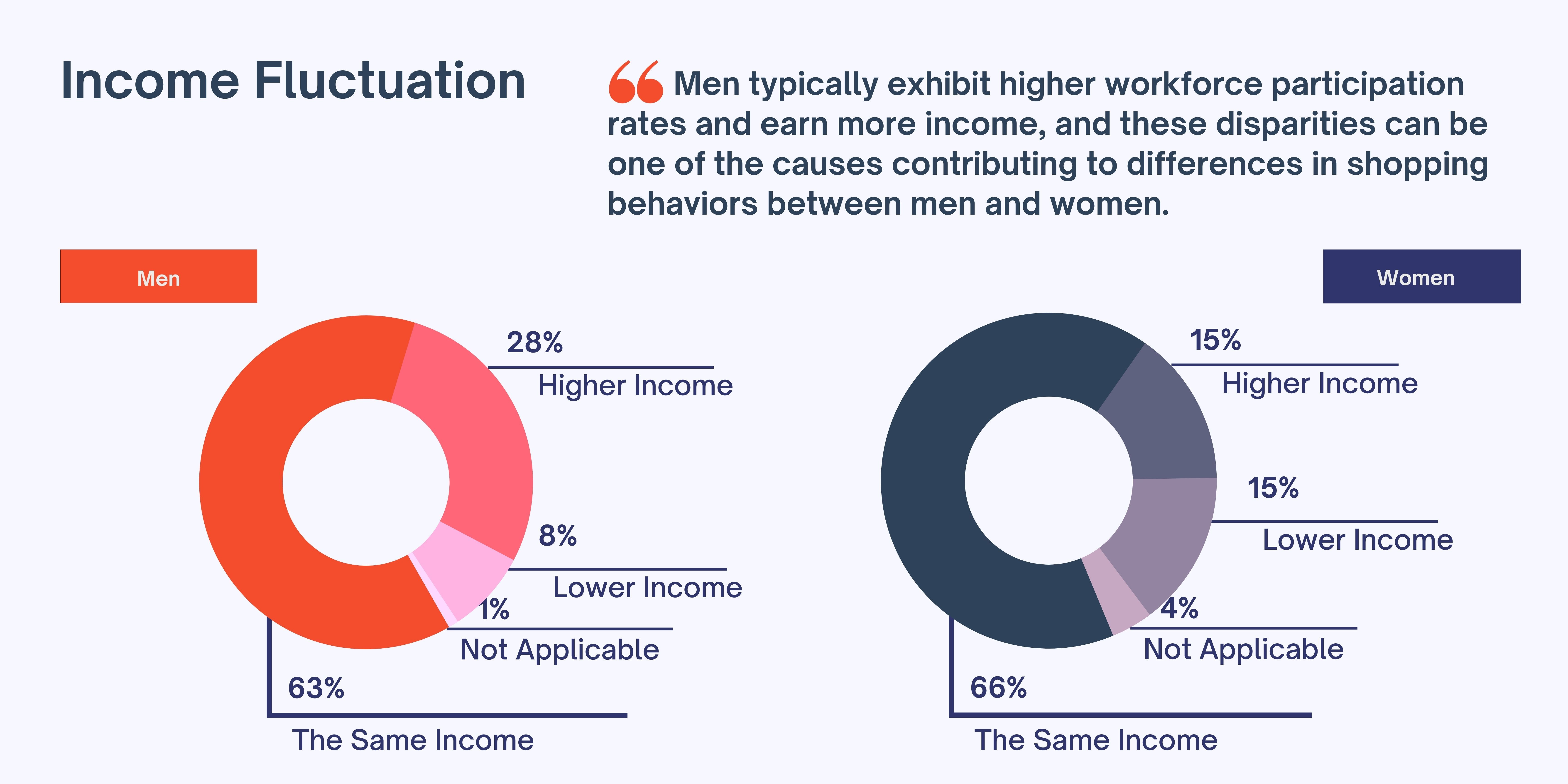 Who Spend More? Men Or Women?
Who Spend More? Men Or Women?
The spending dynamics between men and women in 2021 reveal some intriguing patterns. In the United States, both genders saw roughly three-quarters reporting either a decrease or stagnation in their overall spending during the first quarter. This shared cautiousness extended to their spending habits online, with at least 61% from both groups indicating that their expenses on platforms like Amazon and Walmart stores and online had either fallen or remained consistent during this period. As a matter of fact, the more someone spends on clothes, the more will be the chance of returning.
However, when we delve into the details, disparities emerge. Men, as a proportion of consumers, tend to stand out when it comes to increased spending. This is particularly evident in their spending patterns, where more men than women reported higher expenditures online, on Amazon, and in Walmart stores and online.
Looking ahead to the second quarter, a majority of consumers expected to either reduce or maintain their spending. But here again, it's men who more often expressed their intention to increase their spending, further reinforcing the notion that they are driving the trend of elevated expenditures in 2021.
The differences aren't confined to spending alone. Men appear to have a greater appetite for online shopping, outpacing women in terms of frequency. Whether it's daily or weekly shopping routines, men tend to shop more frequently online, on Amazon, and at Walmart. On the other hand, women seem to engage in slightly less frequent shopping, typically between one to four times a month on these platforms. These distinctions provide valuable insights into how men and women navigate the shopping landscape, shedding light on their respective spending patterns and behaviors in 2021.
Determining whether men or women return items more frequently can provide valuable insights for fashion retailers. This knowledge can inform marketing strategies, product development, and customer service policies. For example, if it's found that women return items more often, retailers might consider offering more detailed size guides or fit recommendations for women's clothing. Similarly, if men return items at a higher rate, improvements in the design and fit of men's fashion items could be explored.
Types of Returned Clothing
Identifying the types of clothing that are returned most often is also essential. This data helps fashion companies focus on product categories that require special attention. For instance, if dresses or jeans are frequently returned due to sizing issues, retailers can invest in providing better size information, such as size charts and fit descriptions, to reduce returns. Understanding which clothing items have high return rates can contribute to more effective inventory management, reducing waste and costs.
Expectation-Reality Gap in Online Shopping For Clothes
If you just try a quick Google search for "shopping expectations vs reality" you will see often comical examples demonstrating the extreme disparities between what customers expect when ordering a product and what they actually receive. One of the primary reasons for customers returning products is that the item doesn't match the description or photographs on the website.
This disconnect can occur for various reasons. Sometimes, the product information on a website lacks detail or is outdated, and this can leave customers feeling misled. Additionally, many product photos are taken months in advance, and occasionally, the actual products received might deviate slightly from the specifications. It becomes problematic when these changes, like variations in the garment’s color or buttons, aren't accurately reflected in the images.
To bridge this expectation-reality gap, it's beneficial for e-commerce websites to include unfiltered online reviews and user-generated content, including photos. These real customer experiences can offer potential buyers a more accurate understanding of what to expect when making a purchase.
Comprehending return rates, the demographic variations in return habits, and the types of clothing commonly returned offers fashion retailers a more precise view of customer preferences and behavior. This information is invaluable for optimizing operations and enhancing the overall shopping experience for consumers.
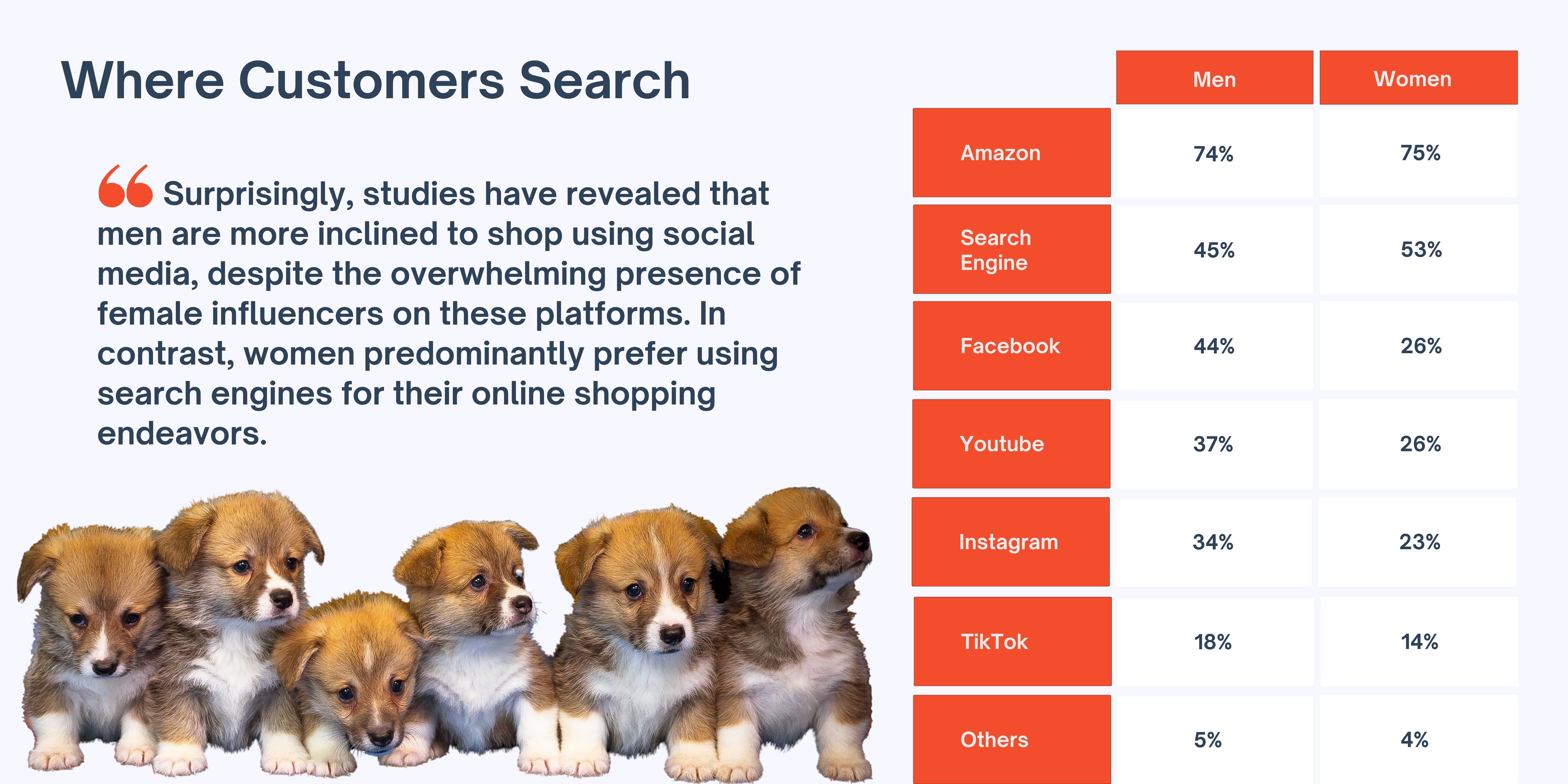 High Return Rates in E-commerce
High Return Rates in E-commerce
E-commerce platforms and fashion retailers collect extensive data on return habits. They track return rates, reasons for returns, and item categories most frequently returned. Analyzing this data helps businesses identify areas for improvement, such as sizing consistency, product descriptions, or return policies. By optimizing these aspects, they can reduce return rates and enhance the shopping experience.
Moreover, e-commerce platforms and retailers often use data to refine algorithms that offer personalized recommendations, potentially reducing the likelihood of returns. For consumers, this data can inform purchase decisions and improve the overall shopping experience. Obviously, return habits play a pivotal role in the fashion industry. Industry reports and studies, as well as data from e-commerce platforms and retailers, offer valuable insights that empower businesses to make informed decisions and improve the overall shopping experience for consumers.
As already said, losing nearly one in every ten purchases is a disconcerting statistic. However, the actual scale of this problem is even more substantial than it first appears. According to Forrester, in 2021, the average return rate for clothing purchased online surged to a staggering 30%. This alarming figure means that nearly one-third of all clothing items sold online were ultimately returned, posing a significant challenge to the profitability of e-commerce fashion businesses.
Even more concerning is the data from Eco-Age, which suggests that average return rates may escalate to as high as 40% . This paints a more dire picture for e-commerce fashion retailers who are grappling with the repercussions of these high return rates. Moreover, KPMG's findings indicate that return rates can reach even more alarming levels. After the holiday period, up to 50% returns may become the norm for clothing retailers. This surge in returns post-holidays underlines the volatility and unpredictability that retailers must contend with in the e-commerce fashion landscape.
The Causes and Consequences
High return rates in e-commerce are not isolated events. There are various reasons behind this phenomenon, including issues with fit, dissatisfaction with product quality, buyer's remorse, and discrepancies between the product received and its online representation. The inability to try on clothing before purchasing makes sizing a critical factor in online clothing returns.
This trend represents a significant challenge for e-commerce fashion retailers. The financial implications of such high return rates are substantial. They lead to increased operational costs, restocking expenses, and ultimately reduced profitability. Furthermore, an under-discussed aspect of this challenge is the environmental impact. Returns generate waste, adding to the growing concerns surrounding sustainability in the fashion industry.
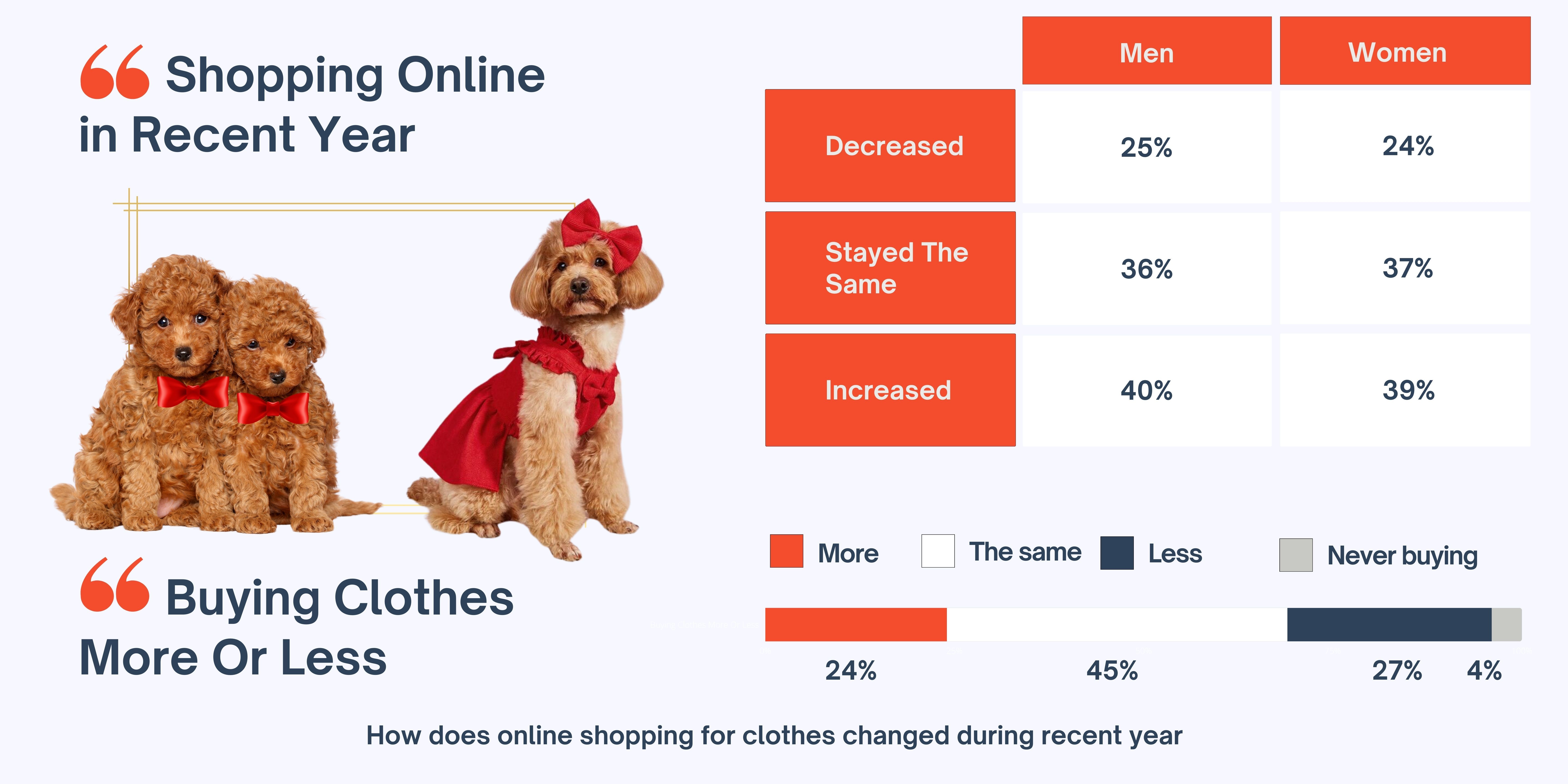 Return Rates by Industry
Return Rates by Industry
Returns are an inevitable part of commerce in virtually every industry. However, the fashion sector faces unique challenges when it comes to return rates. Not only must products function correctly, but they also need to meet the highly subjective fit and style expectations of a diverse range of consumers.
Unsurprisingly, the impact of returns is significantly greater in the fashion industry. According to Statista, consumers are more likely to return apparel items than any other product type. In the past 12 months, a striking 26% of consumers have returned an item of clothing. This high rate is attributed to the complex nature of buying clothing online, where the inability to physically try on an item creates uncertainty. The prevalence of sizing issues is particularly significant in this regard.
Following clothing, shoes represent the second most returned product category, with 18% of consumers having returned them in the past year. Bags and accessories are not far behind, at 17% and 13%, respectively. These statistics underscore the challenges in the fashion industry, where a large percentage of products must be returned due to issues like fit, style, and quality. In stark contrast, other product categories experience significantly lower return rates. Just 11% of respondents reported returning electronics in the past year, highlighting the relatively low rate of returns in this category. Similarly, beauty and cosmetic products had a return rate of 9%, and entertainment items such as books, music, movies, and video games experienced returns from 7% of consumers.
These statistics clearly demonstrate that while returns are a common occurrence in many industries, the fashion sector, characterized by its unique challenges and subjective nature, faces a considerably higher rate of returns, predominantly driven by fit and style issues.
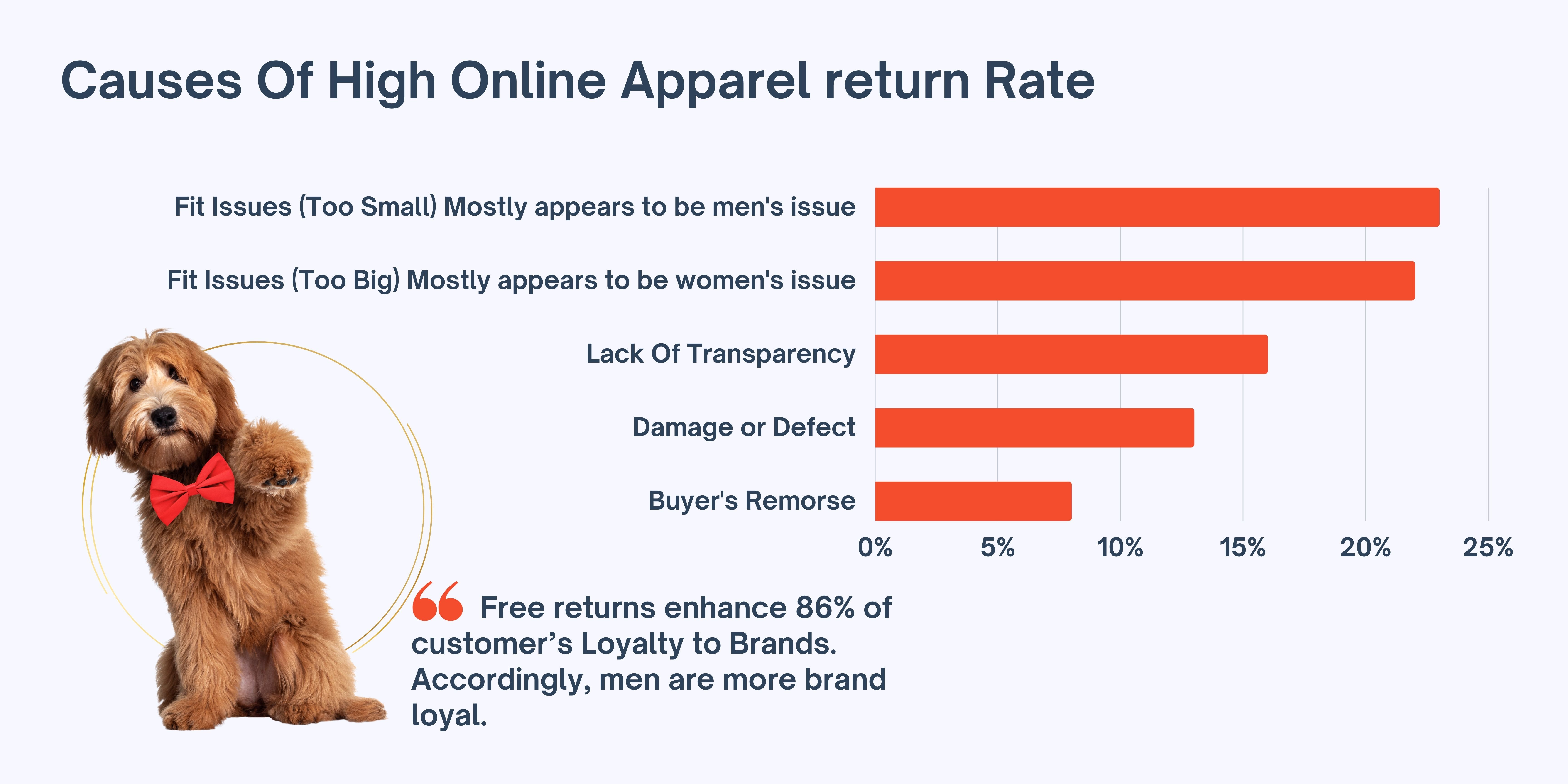 Causes of High Online Apparel Return Rates
Causes of High Online Apparel Return Rates
Online apparel retail experiences an alarmingly high return rate due to several contributing factors. While customers appreciate the convenience of online shopping, they face significant challenges in making informed decisions because they can't physically inspect or try on the products. This inability to interact with the products before purchasing often results in a high volume of returns.
One of the primary factors contributing to elevated return rates is the complexity of sizing. Statista reveals that sizing issues were the most common cause of apparel e-commerce returns. This complexity stems from the lack of standardization in the fashion industry, leading consumers to rely on product dimensions and self-measuring, which are often unreliable. As a result, the products frequently fail to meet customers' expectations, leading to a surge in returns.
The specific sizing issues vary based on the gender and type of clothing. A study by Tessuti found that for men's online apparel retailers, 23% of returns were caused by clothing being too small. In contrast, for women's fashion brands, 22% of returns were attributed to clothing being too big. The scenario in children's clothing closely mirrors men's apparel, with 31% of returns due to items being too small and 16% too big.
Another significant reason for returns is the lack of transparency in product representation. Approximately 16% of consumers have had to return online apparel purchases that did not resemble the products depicted on the product page. Retailers, understandably, aim to showcase their products in the best possible light. However, enhanced imagery and overstated descriptions can raise customer expectations to a level that reality cannot match, leading to dissatisfaction and returns.
Damage and defects are another key driver of returns in the online apparel industry. When purchasing items in physical stores, customers have the opportunity to inspect for issues like loose threads, printing errors, holes, and tears. In contrast, online shoppers only discover the quality of their purchases once they are physically in their hands. This results in 13% of online apparel returns being due to customers receiving faulty goods, caused by manufacturing errors, warehouse damage, or mishandling during shipping.
Furthermore, 8% of shoppers return online apparel purchases due to "buyer's remorse." This phenomenon is when customers change their minds about their purchases, often because the items don't fit their usual style or preferences.
Interestingly, returns aren't always linked to dissatisfaction with the purchased items. Research by Shopify suggests that consumers are likely to spend more on fashion than any other category when shopping online in 2023. This leads to buyers purchasing items they desire but don't necessarily need. The subsequent feelings of regret and anxiety drive them to return some of these items.
A significant factor influencing returns is the growing expectation of lenient return policies. Approximately 86% of consumers believe that free returns enhance their loyalty to a brand, encouraging repeat purchases. Consequently, many customers capitalize on permissive return policies by purchasing multiple variants of the same product, intending to return those that do not fit. This practice essentially transforms their bedrooms into makeshift fitting rooms, at the expense of retailers.
On the other hand, return rates can fluctuate due to factors such as seasonality and economic conditions. For example, fashion return rates may increase during the holiday seasons when more items are purchased as gifts. Economic downturns can also influence return rates as consumers become more price-conscious. Take these factors into account when estimating the percentage of fashion returns. Also, identify any regional patterns in return rates. Some countries or regions might have unique cultural or economic factors that influence return habits. By understanding these patterns, you can better tailor marketing and sales strategies for specific areas.
Conclusion
In conclusion, this blog has shed light on the intricate issue of returns within the fashion industry. By analyzing data from various sources and investigating return habits across different countries, we've uncovered several key findings and insights.
Our research has demonstrated that return rates are not only a matter of concern for individual consumers but also hold significant implications for the fashion industry as a whole. The prevalence of fashion returns poses challenges such as increased operational costs, environmental impact, and potential damage to brand reputation. Understanding the factors influencing return rates is crucial. We've found that factors like the ease of the return process, sizing and fit issues, and the influence of online shopping play substantial roles. Fashion brands and retailers need to adapt to these changing consumer behaviors and expectations.
Additionally, the economic and environmental aspects cannot be overlooked. Our analysis indicates that return rates can be influenced by economic conditions and seasonal factors. Economic downturns, for example, may lead to higher return rates as consumers become more price-conscious. Furthermore, returns contribute to environmental waste. By reducing return rates, the fashion industry can significantly decrease its ecological footprint. It's clear that the fashion industry must continue to evolve. Improved sizing standards, clear and accurate product descriptions, and easy return processes are key areas for development. The adoption of sustainable practices and offering consumers more sustainable choices may help mitigate the environmental impact. The need for ongoing monitoring of return statistics is crucial. As consumer behaviors evolve and the fashion industry adapts to new sales channels and consumer expectations, continuous data collection and analysis are necessary. This ensures that fashion brands and retailers can proactively address changing trends and improve their operations.
In addressing these challenges, innovative solutions like Shaku Body Measurement offer an alternative to traditional return policies. Shaku enables customers to obtain their correct measurements and receive tailored size guidance. Customers can also virtually try on items using AI-calculated size recommendations and photorealistic simulations. This empowers customers to make more informed decisions about their purchases, reducing the need for returns and the associated costs for retailers.
In the ever-evolving world of fashion, the issue of returns is one that cannot be ignored. This research aims to provide a foundation for understanding the scope and implications of the problem and serves as a call to action for the industry to innovate, improve, and create a more sustainable and consumer-friendly fashion landscape. By doing so, we can ensure that the fashion industry continues to thrive while minimizing waste and maximizing customer satisfaction. Stay current and leverage cutting-edge Shaku AI technology to effectively minimize the substantial volume of returns resulting from sizing discrepancies.
